1. Remove the oil pump from the car (see «Removal and installation of the oil pump»).
2. Drain the oil from the pump.
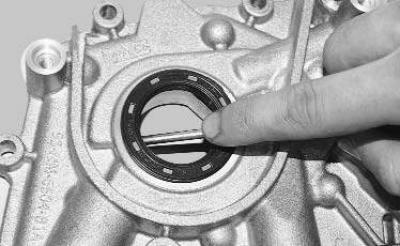
3. Remove from body bore with any pointed tool (e.g. with a screwdriver) front crankshaft seal.
4. Turn out from the case of the oil pump a stopper of the reducing valve.
5. Remove the pressure reducing valve spring and plunger from the housing cavity.
Warning! The pressure reducing valve spring is installed with an interference fit. Remove plug carefully to avoid injury.
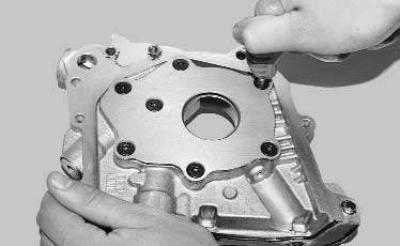
6. Turn out screws of fastening of a cover of the pump..
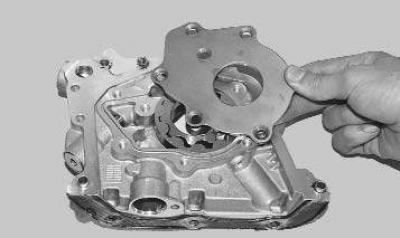
7.... and remove the cover.
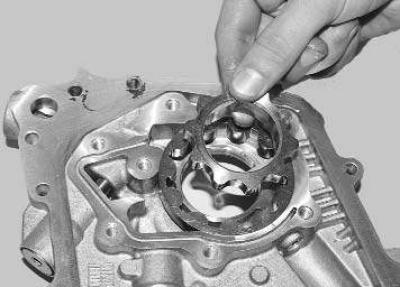
8. Remove the leading..
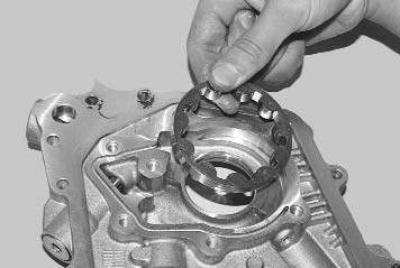
9.... and the driven gear of the pump.
10. Flush the pump housing and removed parts to remove dirt and deposits. Remove dense varnish deposits from the internal cavities of the pump by first softening them with a solvent.
Note. Lacquer oil deposits are well removed with commercially available engine flushes (so called «five minutes»).
11. Inspect the pump housing and cover. If there are cracks, scratches, casting defects, damaged threaded holes, replace the housing (because it is unrepairable) or pump assembly.
12. Check the pressure reducing valve plunger for scratches or binding. Small dents and burrs can be removed with a fine grit sanding stone.
13. Check the pressure reducing valve spring for permanent deformation and bending. Replace heavily compressed or damaged spring.
14. Check gears for metal spalling, scuffing and tooth wear. Replace damaged gears or gears that show increased one-sided tooth wear.
15. Check the axial clearance between the ends of the gears and the plane of the pump cover. This can be done in the following two ways.
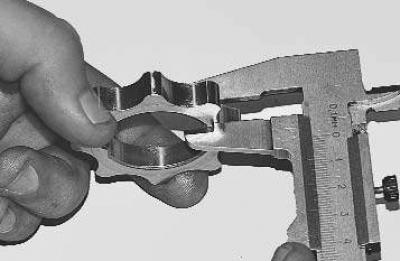
16. In the first method, measure the thickness of the leading..
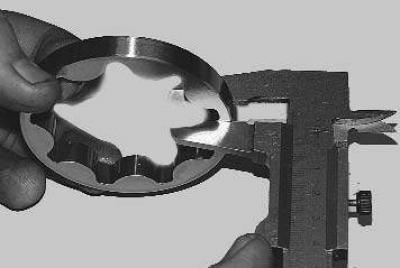
17.... and driven gears..
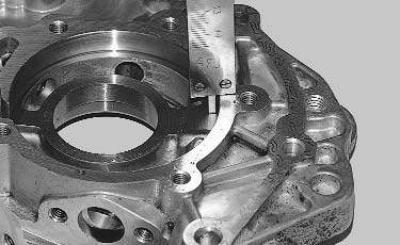
18.... as well as the depth of the bore in the housing for the gears. Calculate the axial clearance as the difference between the arithmetic mean of the boring depth and the thickness of the gears.
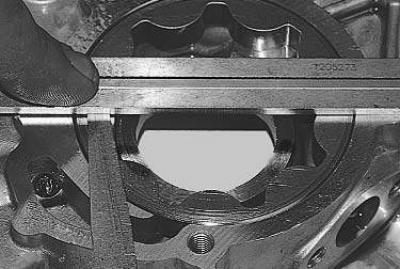
19. In the second test method, install the driven gear into the housing, put a metal ruler (or caliper) end on the body and measure the gap between the body and the ruler with a feeler gauge.
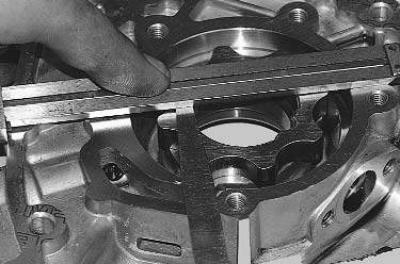
20. Similarly, measure the axial clearance of the drive gear.
21. The maximum allowable clearances measured in both ways should be 0.045–0.100 mm for the driven gear and 0.035–0.085 mm for the drive gear. If any of the clearances are not as specified, replace the housing or pump assembly.
22. Assemble the pump in the reverse order of disassembly. Before pressing into the pump cover, lubricate the front crankshaft oil seal with engine oil. Apply an anaerobic threadlocker to the threads of the pressure reducing valve plug and tighten the plug.
Visitor comments